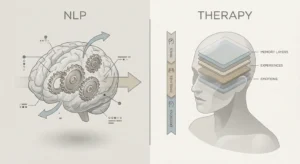Conflict is bound to happen in any team, especially in a busy, fast-paced city like Toronto. Handling conflict can make or break your team’s success, whether it’s a slight miscommunication or a bigger clash of ideas. Unresolved tension can lead to low morale, missed deadlines, and a lack of trust among colleagues.
Imagine your team as a group of musicians. When everyone plays their part in harmony, the result is beautiful. But the entire piece suffers when one player’s instrument goes out of tune. The same happens in teams. Conflict, if not managed, disrupts the flow of work and hampers progress.
That’s why learning how to resolve conflicts effectively is key. It’s not about avoiding disagreements but addressing them head-on with the right strategies.
In this article, we’ll explore practical conflict resolution methods that can help your team in Toronto build stronger, more productive relationships, ensuring everyone’s on the same page and working toward common goals.
Understanding the Types of Conflicts in Toronto Teams
Conflict can arise in many forms within a team. It’s not just about dramatic arguments; it’s often rooted in more minor issues that build up over time. Understanding the different types of conflicts can help Toronto teams address problems before they escalate. Here are five common types of conflict:

Communication Conflicts
Picture this: two team members discuss a project, but their messages don’t align. One might feel like they’re being clear, while the other feels confused. These miscommunications can stem from differences in how people express themselves, interpret information, or even simple misunderstandings during meetings.
This type of conflict is most common in teams, especially when communication channels aren’t properly established.
Personality Clashes
Teams are made up of individuals with unique personalities. While diversity is a strength, it can also lead to personality clashes. Think of it like two people with different approaches trying to solve the same problem. One might be more assertive, while the other is more reserved.
If these differences aren’t handled well, it can create unnecessary tension and conflict, even without disagreement on the actual work.
Task-Related Conflict
When it comes to tasks, everyone has their own ideas about how things should be done. This can lead to conflicts about dividing responsibilities, which direction a project should take or prioritizing specific tasks.
In a fast-paced environment like Toronto, where deadlines are tight, it’s easy for these task-related conflicts to arise if there’s a lack of clarity about roles or expectations.
Value or Belief Conflicts
Sometimes, conflicts go beyond work and touch on deeper personal values or beliefs. These might include differences in how employees view the company’s mission, ethical standards, or the overall approach to business. While these conflicts are often the hardest to resolve, addressing them with open dialogue and mutual respect can lead to stronger, more aligned teams.
Resource Conflicts
In a competitive work environment, resources such as time, budget, and personnel can become scarce. This often leads to conflicts when multiple team members need the same resources to complete their work.
Whether fighting for access to a limited budget or trying to get time with a specific team member, resource conflicts can strain team dynamics and productivity.
Understanding these five types of conflict can help Toronto teams address issues early and find solutions before they escalate. The goal isn’t to avoid conflict altogether, but to manage it effectively so the team can stay focused, productive, and collaborative.
The Impact of Unresolved Conflict on Toronto Teams
Unresolved conflict doesn’t just linger, it grows. When issues are left unaddressed, they can have a snowball effect on the team. Let’s look at five key impacts unresolved conflict can have on Toronto teams.

Decreased Productivity
When conflict is unresolved, team members often become distracted or disengaged. They might avoid certain colleagues, waste time arguing over trivial issues, or simply lose focus on their tasks.
Imagine a team trying to work on a project, but instead of collaborating, people focus more on the tension between them. The result? Deadlines are missed, and work quality drops.
Poor Team Morale
Tension in the workplace can lead to frustration, stress, and even resentment. If employees feel like issues are being ignored or mishandled, their morale takes a hit. It’s like a team that feels like they’re rowing in different directions, everyone’s working hard but no one’s moving forward.
Over time, this lack of unity can cause disengagement and dissatisfaction among team members.
Breakdown of Relationships
When conflicts are not resolved, relationships between team members begin to erode. Trust is broken and respect fades. It’s similar to a friendship where misunderstandings pile up but are never discussed. Eventually, communication breaks down, and people stop working together smoothly. When relationships suffer, collaboration becomes harder, and the team’s cohesiveness is compromised.
Increased Employee Turnover
When conflict is left unchecked, employees may feel the need to leave rather than deal with the tension. If the work environment becomes toxic or hostile, it’s only natural for people to look for a more positive place to work. High turnover costs companies time and money, not to mention the loss of valuable team members who could have contributed to long-term success.
Damaged Company Reputation
A team with unresolved conflict can also harm the company’s reputation, especially if the tension spills into client relationships or the public view. Customers or partners may look elsewhere if they sense a lack of unity or professionalism. A company’s internal struggles often show on the outside, and it can take years to rebuild a tarnished reputation.
Unresolved conflict affects more than individuals; it affects the entire team, the organization, and even the company’s reputation. That’s why addressing conflict early and ensuring healthy communication channels are always open is essential. The longer issues are ignored, the more harm they cause.
Key Conflict Resolution Techniques for Toronto Teams
When conflict arises in Toronto teams, it’s essential to have strategies in place to resolve it quickly and effectively. Here are five practical techniques to help navigate conflict and keep the team moving forward.
Open Communication Channels
Good communication is the foundation of any conflict resolution process. When tensions rise, it’s easy for people to start avoiding conversations or misinterpreting each other’s words. The key is to encourage open, honest discussions where everyone feels heard. Team members should be encouraged to express their concerns calmly and respectfully, without fear of backlash. It is like cleaning out a clogged drain; getting everything out in the open helps clear up the blockage.
Active Listening
Sometimes, all someone needs is to feel heard. Active listening is a powerful tool for resolving conflict, allowing individuals to feel understood and respected. It’s not just about hearing the words, but truly understanding their message. A simple “I hear you” can go a long way. In team settings, this helps prevent misunderstandings and ensures that everyone’s point of view is considered.
Mediation
When conflict escalates beyond what the team can handle, bringing in a neutral third party can help. A mediator doesn’t take sides; they simply guide the conversation, helping both parties reach a solution. Mediation can be especially effective when emotions are running high or when one or more team members feel unheard. Consider a mediator like a referee in a game; they help both teams play fairly and find common ground.
Collaborative Problem-Solving
Instead of focusing on who’s right or wrong, shifting the focus to solving the problem together is a more productive approach. Collaborative problem-solving encourages team members to put their heads together and come up with a solution that works for everyone. It’s like a group of people building a puzzle. Each person might see a different way to fit the pieces together, but by working together, they can complete the picture.
Setting Clear Expectations
Many conflicts arise when people don’t know what’s expected of them. Setting clear expectations from the start can prevent many misunderstandings. When everyone knows their roles, responsibilities, and goals, there’s less room for confusion. Think of it like following a map; if everyone knows the destination and the route, there’s a lot less chance of getting lost.
These techniques aren’t just about managing conflict; they’re about creating a culture of trust, understanding, and collaboration. By implementing these strategies, Toronto teams can turn conflicts into opportunities for growth and stronger working relationships.
How to Build a Conflict-Resilient Team Culture in Toronto
Creating a team that can handle conflict without falling apart is essential for long-term success. When conflicts arise, a strong, conflict-resilient team culture can turn challenges into opportunities for growth. Here’s how to build a team culture in Toronto that can withstand conflict and become stronger.

Encourage Open Communication
Communication is the key to any successful team, especially when it comes to handling conflict. By creating a culture where team members feel comfortable speaking up, you prevent issues from brewing under the surface. Think of it like a pressure cooker: if the steam can escape, the pressure won’t build up and cause an explosion. Encourage team members to express their thoughts and feelings openly and ensure everyone listens actively.
Create a Safe Environment for Conflict
Not all conflict is bad; how you handle it matters. A conflict-resilient team culture is one where disagreements are seen as a natural part of working together. Make it clear that it’s okay to disagree, as long as it is handled respectfully. Just like a healthy relationship, conflict should be seen as a chance to strengthen bonds, not break them. When team members feel safe enough to voice their concerns, they’re less likely to let small issues escalate into major problems.
Set Clear Roles and Responsibilities
When everyone knows their role and what’s expected of them, there’s less chance of misunderstandings and conflict. In a Toronto team, where people may come from diverse backgrounds and work styles, this clarity helps everyone stay on the same page. It’s like a sports team: each player has a position, and they know exactly what they’re supposed to do. Setting clear roles prevents overlap and confusion, reducing the chances of conflict.
Encourage Team Collaboration
Conflict can often arise when people work in silos, isolated from each other. A conflict-resilient team is one where collaboration is the norm. Encouraging team members to work together on projects not only strengthens relationships but also helps prevent misunderstandings. It’s like a group of people pushing a cart; if everyone pulls in the same direction, the team moves forward smoothly. Collaboration helps everyone feel included and when conflicts do arise, there’s already a foundation of trust to work from.
Lead by Example
The best way to build a conflict-resilient culture is to lead by example. If the leadership team shows how to handle conflict with respect, openness and a focus on solutions, others will follow suit. Think of it like planting a tree: the leader is the root and the team members are the branches. The healthier the root, the stronger the branches grow. Leaders should model calm, clear communication and the ability to listen and compromise when needed.
Building a conflict-resilient team culture in Toronto takes time and effort, but it pays off in the long run. By fostering open communication, creating a safe environment for disagreement, setting clear roles, encouraging collaboration, and leading by example, teams can survive conflict and thrive.
The Role of Leadership in Conflict Resolution
When conflict arises in a team, leadership is what guides everyone through the storm. It’s not just about resolving issues; it’s about setting the tone for handling conflict and ensuring the team remains productive and united. Here’s how effective leadership plays a vital role in conflict resolution.
Leading by Example
Leaders set the standard for how to handle conflict. When a leader handles disagreements calmly, listens actively, and seeks fair solutions, the team is more likely to follow suit. Think of it like teaching someone to swim. If the instructor stays calm in the water, it helps the student stay calm too. Similarly, if the leader handles conflict well, it creates a safe space for the team to do the same.
Maintaining Objectivity
As a leader, remaining neutral in conflict situations is essential, especially when emotions run high. A great leader doesn’t pick sides but focuses on understanding the issue’s root. It’s like being a referee in a game; your job isn’t to root for a team but to ensure the game is fair for everyone. Leaders should listen to all parties involved and guide them toward a resolution that benefits the team.
Facilitating Open Communication
Leaders should create an environment where communication is open and honest. When conflict arises, team members must feel comfortable expressing their thoughts without fear of judgment or retaliation. Imagine trying to build a bridge across a river; you need a solid foundation before the rest can follow. A leader who encourages open communication lays that foundation, allowing team members to talk through issues rather than letting problems simmer beneath the surface.
Encouraging Problem-Solving
Great leaders don’t just step in and offer solutions. Instead, they guide their teams to find solutions together. This builds a sense of ownership and collaboration. It’s like assembling a puzzle with your team: the leader may know where the pieces go but everyone works together to complete the picture. By involving team members in the problem-solving process, the leader resolves the conflict and strengthens the team.
Promoting a Positive Team Culture
Leadership goes beyond resolving individual conflicts; it’s about shaping the overall culture of the team. A leader who fosters trust, respect and collaboration creates a foundation that makes conflict resolution easier. It’s like maintaining a garden: if the soil is healthy and well-tended, the plants grow stronger and are more resilient to storms. Similarly, a positive, supportive team culture helps resolve conflict more smoothly when it arises.
Effective leadership is the backbone of a conflict-resilient team. When leaders embrace these principles, they can resolve conflicts and turn them into opportunities for growth.
Conflict Resolution Best Practices for Toronto Teams
Conflict is a part of any team dynamic, but it doesn’t have to derail productivity or morale. With the right approach, conflicts can be resolved smoothly and even strengthen the team. Here are some best practices for effectively handling conflict within Toronto teams.
Address Conflict Early
The sooner you deal with conflict, the easier it is to resolve. Left unchecked, small issues can snowball into larger problems. Think of it like fixing a small leak in a pipe before it bursts and floods the whole room. By addressing conflict early, teams can avoid unnecessary stress and keep things on track.
Stay Focused on the Issue, Not the Person
When conflict arises, it’s easy to make it personal. However, focusing on the problem, rather than attacking the individual, keeps the conversation productive. Imagine a coach focusing on improving the team’s performance instead of blaming one player for a loss. Keeping things objective allows the team to work together to find a solution, rather than letting emotions dictate the outcome.
Encourage Empathy
Empathy is key in understanding the other person’s point of view. Encourage team members to listen with an open mind and step into each other’s shoes. It’s like trying to read a book you’ve never opened; if you don’t listen to the other person’s perspective, you miss out on the full story. Empathy fosters a deeper understanding, which makes resolving conflict much easier.
Be Transparent About Expectations
Conflicts often arise when expectations aren’t clear. Make sure everyone knows their role, responsibilities and the goals of the team. There’s less room for misunderstandings when expectations are clear from the start. It’s like building a house; you need a solid blueprint for everyone to follow. When everyone knows what’s expected, there’s less chance for conflict down the road.
Use Neutral Mediators When Necessary
Sometimes, conflicts become too complex for the team to resolve alone. In these cases, bringing in a neutral third party, such as a mediator or manager, can help. A mediator acts like a referee, ensuring both sides are heard and helping guide the conversation towards a fair resolution. It’s a great way to keep things impartial and prevent escalation.
By using these conflict resolution best practices, Toronto teams can stay focused, collaborate effectively and maintain a positive work environment.
Conclusion
Conflict doesn’t have to break a team apart. It can spark growth, boost communication and strengthen relationships when managed well. By recognizing different types of conflict, addressing issues early and encouraging an open, collaborative environment, Toronto teams can transform challenges into opportunities. Leadership plays a vital role in setting the tone, showing how to handle disagreements respectfully and constructively.
Building a culture that embraces conflict takes time, but the payoff is worth it: stronger teamwork, higher productivity and a healthier work atmosphere. The secret is not to avoid conflict but to face it head-on with the right mindset and tools. Remember, conflict is inevitable but handled the right way, it can be your team’s greatest asset.





